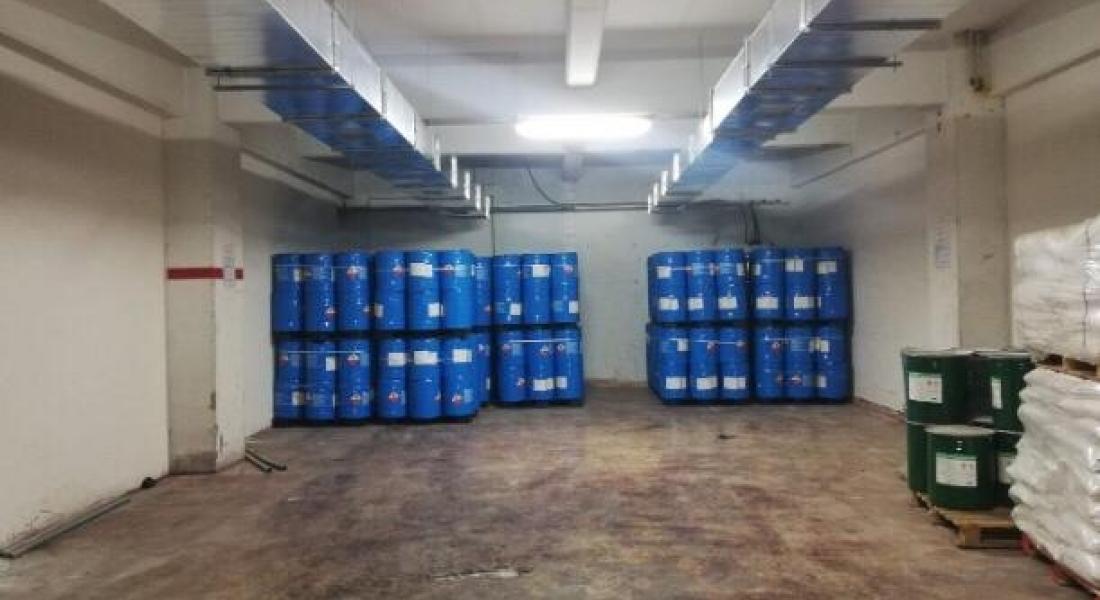
Ventilation Criteria for Chemical Substance Storage
Chemical substance storage areas are strategic zones that must be designed with special engineering approaches due to the high risks involved. In these areas, where flammable, combustible, toxic, or reactive substances coexist, ventilation systems are vital not only for climate control or comfort but also for preventing explosion risks, protecting personnel health, limiting environmental impact, and ensuring legal compliance.
In this context, HVAC solutions integrated with mechanical and energy engineering disciplines are among the most important tools to ensure the safety of the storage environment.
Risk Profile of Chemical Substance Storages
The materials stored in such warehouses can be in gas, liquid, or solid form. However, their common feature is their potential to undergo hazardous reactions, evaporate into the environment, and threaten human health. Therefore:
-
They may emit Volatile Organic Compounds (VOCs),
-
They can create flammable and explosive atmospheres (ATEX),
-
Inhalation may cause acute or chronic poisoning.
These risks necessitate that ventilation systems be controlled, continuous, monitorable, and compatible with emergency scenarios.
Primary Objectives of the Ventilation System
Ventilation systems installed in chemical substance storage must fulfill the following vital functions:
-
Removal of toxic and flammable gases from the environment,
-
Elimination of surface evaporations,
-
Continuous supply of fresh and breathable air,
-
Reduction of explosive gas concentrations below the Lower Explosive Limit (LEL),
-
Reduction of fire and explosion risk,
-
Providing environmental monitoring through sensors.
Design Criteria for Ventilation Systems
a) Air Change Rate (ACH) and Volumetric Flow Calculation
The minimum air change rate to be used in storage depends on the type of stored substance:
-
Flammable liquid storage: 6–10 ACH
-
Toxic gas storage: 10–15 ACH
-
Acid/base chemicals: 8–12 ACH
-
Inert materials (low risk): 2–4 ACH
When calculating flow rate, the following parameters should be considered:
-
Storage volume (m³),
-
Type of container/barrel used,
-
Temperature and evaporation rate,
-
Risk scenarios for gas leakage.
From an energy engineering perspective, variable air volume (VAV) systems are preferred for energy saving during peak hours.
b) Exhaust Points and Air Intake Height
Chemical substances behave differently depending on molecular weight:
-
Light gases (e.g., ammonia) rise → Exhaust should be taken from above
-
Heavy gases (e.g., chlorine, LPG) sink → Exhaust should be near the floor
-
Toxic gases → Exhaust should not be released directly into the atmosphere but filtered
Therefore, the exhaust system must be designed with intake height and distribution specific to each chemical.
Filtration and Gas Treatment Systems
If the exhausted air is released directly into the outdoor environment, environmental risks may occur. Therefore, gas emissions should be purified before release into the atmosphere.
Filtration systems include:
-
Activated Carbon Filters: for organic vapors and odors
-
Acid Gas Absorbers: gases like HCl, SO₂, NOx
-
Chemical Scrubber Systems: washing with water-based or reactive liquids
-
Particulate Filters (HEPA/G4): removal of dust, chemical crystals, and aerosols
These systems must be periodically maintained, and their condition automatically monitored with pressure drop sensors, with maintenance planning done accordingly.
Explosion Risk Prevention (ATEX Compliance)
When flammable gases and vapors accumulate, the storage atmosphere becomes an explosive hazard zone. Therefore:
-
Fans and motors compliant with the ATEX directive (Ex-Proof) must be used,
-
Fan blades must be spark-free, antistatic, and resistant to corrosive gases,
-
Exhaust systems must be grounded and protected against lightning,
-
Fan motors must operate automatically in synchronization with gas detectors.
These precautions are critical not only for system safety but also for meeting legal responsibilities.
Automation, Sensors, and Emergency Scenarios
Modern HVAC systems provide not only mechanical functions but also data collection, monitoring, and automatic intervention capabilities. Accordingly:
-
Gas detectors (LPG, ammonia, acetone, CO, etc.),
-
LEL (Lower Explosive Limit) meters,
-
Temperature and humidity sensors,
-
Ventilation fan failure alarms,
-
Pressure sensors and filter clogging indicators,
should be integrated into centralized automation software.
In emergencies, the system must:
-
Automatically activate when gas concentration increases,
-
Give audible and visual warnings,
-
Implement automatic ventilation mode (maximum flow).
Energy Efficiency Assessment
Ventilation systems in chemical storage may require continuous operation, which means high energy consumption. The following technical solutions can reduce this consumption:
-
Fan speed adjustment with Variable Speed Drives (VSD),
-
Modulated operation based on CO₂ or gas sensors,
-
Energy recovery units (heat exchangers),
-
Timer-controlled operating modes.
These measures can save 25–40% in annual operating costs.
Legal Regulations and Standards
Chemical substance storages are subject to many national and international regulations. Ventilation systems should be designed according to:
-
TS EN 60079 (ATEX): Equipment for explosive atmospheres,
-
Fire Protection Regulations for Buildings,
-
Environmental Permit and License Regulations – Emission Standards,
-
Workplace Ambient Air Quality Measurement Regulations,
-
ASHRAE 62.1 / NFPA 30 / OSHA 1910.106: Ventilation criteria for chemical storages.
Failure to comply with these regulations can lead to environmental fines, occupational safety violations, and even loss of life.
Safe Storage Begins with Proper Ventilation
Ventilation in chemical substance storage is not just a supporting system but the primary defense line to control risks at the source. For a successful ventilation system:
-
Correct air change rates must be determined according to storage characteristics,
-
Filtration and exhaust infrastructure appropriate for hazard class must be installed,
-
ATEX-compliant safety systems must be integrated,
-
The system must be made suitable for continuous operation considering energy efficiency.
The key to safe, sustainable, and legally compliant management of chemical substance storage is correctly planned and precisely operated ventilation systems.
İlker KURAN
Alperen Engineering Ltd. Co.







